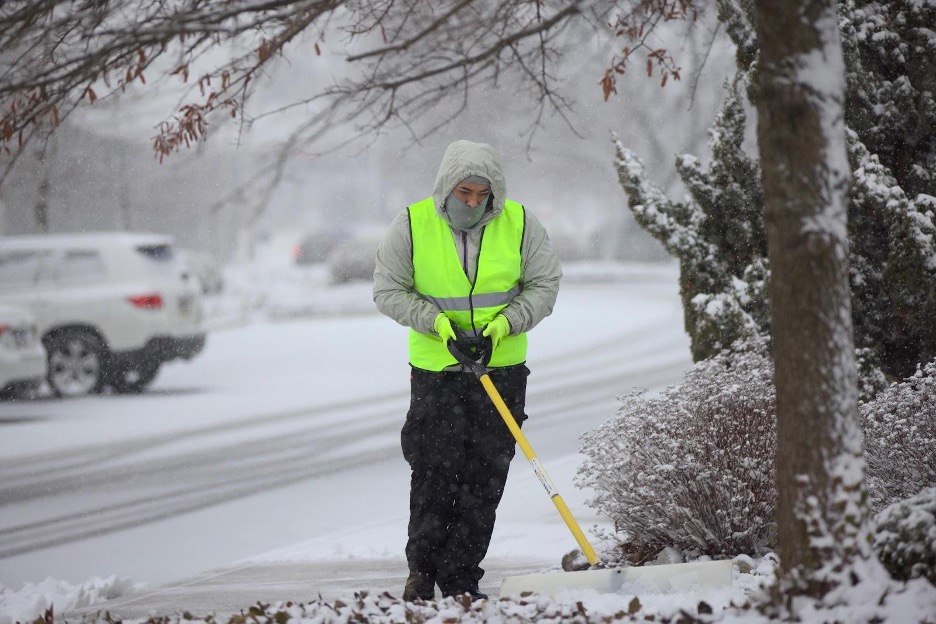You might think your lawn looks great in the spring, but the hot, sticky Pennsylvania summers can transform that emerald carpet into a hayfield like a magic trick. Stress isn’t simply a single affliction or disease that can be managed easily; it’s a combination of drought, heat, soil conditions, and nutrient imbalance that is unique to your lawn. If stress goes unchecked, it will weaken your grass, allow weeds to take hold, and create bare spots.
At New Castle Lawn & Landscape, we’re dedicated to helping homeowners identify issues before damage becomes irreparable. In this post, we’ll explore the common factors that contribute to a stressed Berks County lawn and the clear signs that your lawn needs some attention. Remember that taking prompt action results in quicker recovery and is much less expensive than waiting until fall to reseed.
Table of Contents
ToggleCommon Stress Factors in Berks County Lawns
Extreme Heat
Even though some turf varieties can endure higher temperatures longer than others, whenever daytime highs reach the 90s, turf enters survival mode. This means it shuts down photosynthesis and redirects energy to the root system for long-term survival. Prolonged heat causes grass blades to become limp and faded, making them more susceptible to fungus or disease.
Prolonged Drought
Three to four weeks without rain can deplete all available soil moisture, especially in our area’s clay-loam soil. Dehydrated roots shrink and retreat, while grass blades turn gray-green before becoming straw-colored. This significantly slows recovery without supplemental watering or wetting agents.
Soil Compaction
Foot traffic, riding mowers, and heavy equipment compact the soil and squeeze all the air pockets out of it. Not only does this limit the oxygen available to roots, but it also stops water from being able to penetrate. Compacted zones feel hard underfoot and resist a screwdriver test, and they set the stage for shallow roots that are at risk during extended droughts.
Imbalanced or Acidic Soil
A huge part of southeastern Pennsylvania has a naturally low pH, and acidic soils make it hard for roots to access calcium, magnesium, and other key nutrients. This can make fertilizers useless and cause dangerous buildup in the soil. Without corrective lawn treatments and micronutrient application, your lawn could lose its color and natural vigor.
Top 3 Signs of A Stressed Lawn
- Gold or Brown Patches: Seemingly random blotches that don’t green up after a typical rain can signal localized heat damage or potential dehydration. In some cases, it may also be indicative of a grub problem.
- Thinning or Bare Sport: Healthy turf has substantial self-repair abilities, and most minor damage can be recovered from in a week. If the canopy is open, weed seeds have a higher chance of germination. Patches wider than a dinner plate could be a sign of sustained root die-off.
- The Footprint Test: An easy test for most homeowners is to walk across the lawn in the late afternoon. If the grass blades don’t stand back up within 30 minutes, they are losing turgor pressure, which is a telltale sign of heat fatigue or drought.
How Professional Stress Treatments Work
No two lawns are the same, so our services are tailored to the unique needs of your lawn. Our signature Summer Stress Preventer starts with a full assessment of your lawn and soil’s health and physical condition. Then, we apply a slow-release, soil-available nutrient blend in the late spring. This is formulated to strengthen turf to withstand heat spikes and limited rainfall in the coming months.
Instead of messy and unsightly core plugs, we inject a humic acid solution that expands the pore space and relieves compaction gently. This treatment also delivers calcium directly into the deep root zone of larger plants, improving water infiltration and oxygenation and helping microbial action in the soil.
Heat-stressed turf is an easy target for brown patch and chinch bugs. A light, preventive fungicide paired with a season-long insect growth regulator keeps pathogens and pests from taking hold while grass rebounds.
Recovery Fertilization & Micronutrients
Stressed lawns also typically lack nutrients like iron, magnesium, and sulfur. Our balanced recovery system replenishes these elements and provides a deep greening effect. Our precision soil tests tell us exactly what’s needed, so there’s no guesswork involved and your lawn gets what it needs without the potential for burning.
Finally, we finish with a bio-based wetting agent that breaks water’s surface tension, helping each irrigation cycle penetrate deeper and last longer. Over time, this means fewer dry spots and less stress.
DIY Fixes vs. Calling New Castle Lawn & Landscape
Trying to revive a heat-stressed lawn with hardware-store fertilizer can be like treating sunstroke with a glass of water—helpful, but just not enough. Residential-grade spreaders can be uneven, and store-bought fertilizer blends might not be exactly what your lawn needs. Renting an aerator can be a good start toward relieving compaction, but it won’t help fix the pH or fungal issues that might be hiding in thatch.
Free Lawn Health Assessment & Customized Plan
Our technicians start with a no-cost, on-site analysis of soil chemistry, thatch depth, and turf density. We measure compaction with a penetrometer and flag disease pressure under a handheld microscope.
You’ll receive a treatment roadmap—including cultural practices you can handle yourself—so every dollar you invest generates visible results. If you’re ready to see how healthy your lawn could be, we’re ready to help, and you can get your personalized action plan within just 48 hours.
The Leader in Berks County Lawn Care
Summers in Berks County can be tough on turf, but stress damage doesn’t have to be permanent if you act quickly when you see it. Armed with liquid aeration, precision fertilization, and disease suppression, New Castle can help your lawn rebuild root structure so it stays healthier and greener. Don’t let brown patches snatch your curb appeal. Reach out today to our local experts to book a free estimate for your lawn stress treatment in Berks County, PA.






